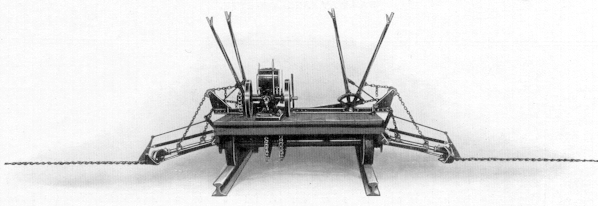
Nick Pull
Railroads have had problems with weeds and brush on the right of way since the beginning. They cause safety, and deterioration troubles unless they are controlled. Weeds along the track will hide damage, foreign objects, and incorrectly thrown switches. They collect water and dirt which promotes tie rot and frost heaves. In dry seasons, they provide the tinder to start a right of way fire.
Until the mid 1920's most weed control and weed control equipment was home grown. As wages and other costs (including fire damage payments) increased the need for better equipment was recognized. A number of companies answered this need by building a wide variety of machines to remove weeds by either cutting, plowing under, poisoning or burning them. This article will display a number of early weed mowers and sprayers. Part 2 will cover the machines that plowed under or burnt the weeds.
Track mowers needed self propulsion, powered cutters, a way to raise and lower the cutters. The advancements made were to ease these operations.

In 1914, this Fairmont mower was considered an advancement. One man operated the motor car's movement (up to3m.p.h.) and two men worked the two levers per side that moved the sickle bars up and down to follow the ground
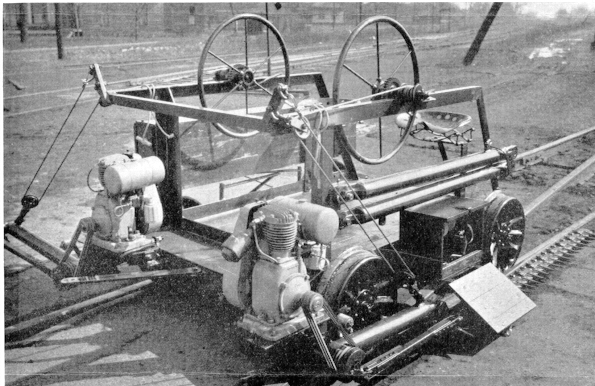
This Rawls M-5 Railway Mower of the mid 1920's used two 2h.p. engines to drive the 6 foot bars. Extenders could move the bars out another 6 feet for a second swath. The machine required a motor car for propulsion.
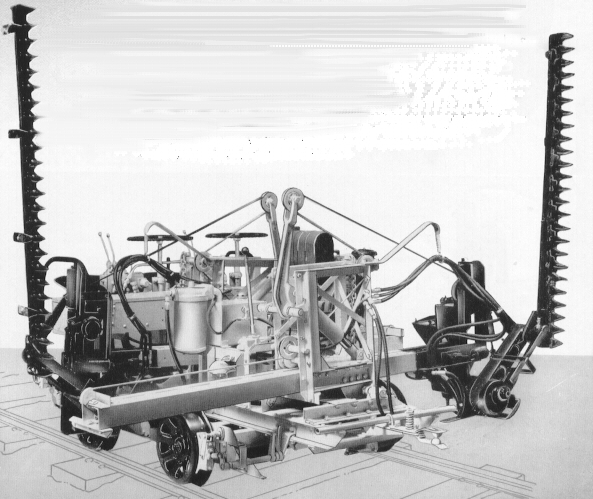
This Fairmont W24-A Weed Mower also requires a towing motor car. but its power is distributed by hydraulics, unlike the Rawl's belt drive. A second cut can be made by extending the bars. Mounted on the pitman arm of the right bar is a grinding wheel for sharpening the sickles. Later versions of the W24 were self propelled.
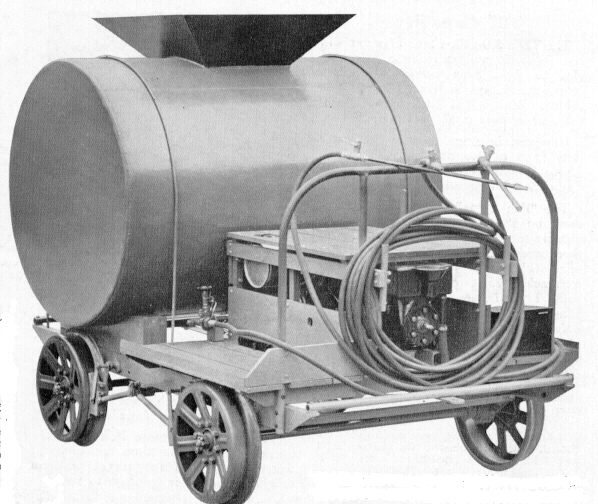
The Fairmont T27 shown above and the T28 carried 500 gallons of water or weed spray. The T28 was unpowered and served as an extra tank for the T27 which had a 5 h.p. engine and centrifugal pump. These 1930's models needed a motor car for propulsion. They were often used to follow weed burners or in some cases, follow trains to put out any small fires that were left behind.
Home made sprayers were often made from old tank cars. Large commercially made sprayers were not very common due to cost and environmental concerns.
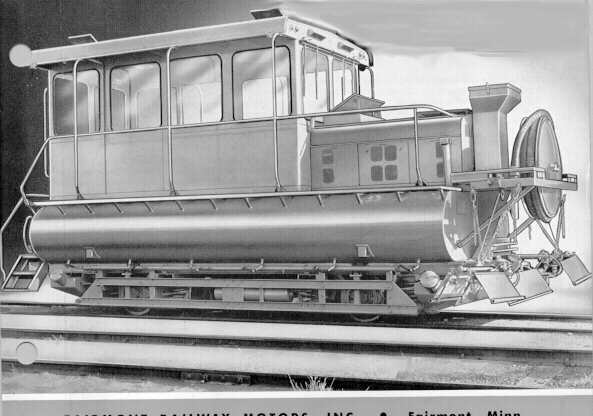
The Fairmont W66 Spray car carried 2600 gallons of weed killer. It could spray at a rate of 100 gallons per mile at 27 m.p.h. It had a 160h.p. propelling engine and 2 11 h.p. pump engines.
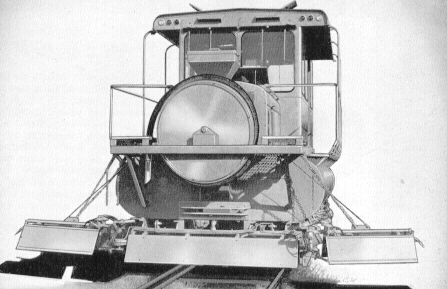
The spray arms are extended on this W66. They could be extended out 20 feet.
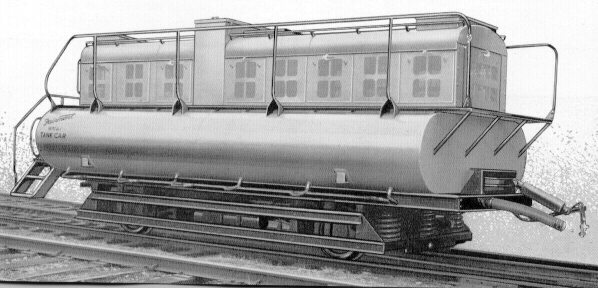
The W70 was a tank car for use with the W66. It could carry 3000 gallons.